Changing climatic conditions, extreme weather events like flooding, and increasingly cloudy days have been more common in the last year. Unseasonal challenging weather conditions have made it difficult for many people to grow a food garden. Since I moved house six months ago, the area I now live in has experienced three floods.
Thankfully, while my garden was not flooded, I have seen firsthand the devastation in our region. Despite excellent drainage in my raised garden bed, I lost a hundred garlic to rot. As the garlic was shooting and establishing, they didn’t have mature root systems and couldn’t hold up against continuous rain.
Drought, And Then Rain
Many plant species have adapted to less rain after years of drought in Australia. However, extensive rainfall without letup caused the water table to rise in many gardens, and soils became saturated. In some places, it took many days to recede. Those gardens devastated by contaminated floodwaters have lost plants, trees and biodiversity and destroyed the soil’s food web.
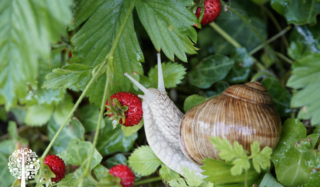
Leafy greens that generally thrive in cooler months were largely ruined by rain, too much moisture and unseasonal fungal diseases. Like farmers, many home gardeners lost seedlings of delicate plants like lettuce and spinach. Heavy rain smashes the leaves. Wet conditions bring the slugs and snails out to take what’s left. When I could finally get out to my garden after the rain stopped, most of my spinach plants were skeletonized stalks!
Paying The Price
Weeks of heavy rain made it too wet for most bees, pollinators and flying insects to go about their normal activities. So many crops lost their flowers, and few fruits were pollinated. This has delayed the production and harvesting of fruiting crops we usually enjoy during cooler months. As a result, leafy greens that are available in the supermarket have skyrocketed in price. Head lettuces like Icebergs have been selling for $10-12 each. Fast-food chains have been substituting lettuce with cabbage as it’s more resilient to wet conditions and still available. Luckily, lettuce easily self-sows over the cooler months. So post-rain, many gardens had volunteer lettuces popping up to replace those demolished. When fresh produce costs are escalating, we need our food gardens more than ever.
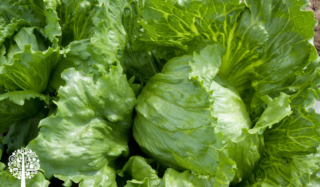
Cloudy Skies
Prolonged periods with extensive cloud cover and little sunlight affect plant growth as they don’t photosynthesize. After the rain, flooding, and disappointment come the clean-up and heartbreak over lost crops.
Yet a garden also offers hope and lessons for what we can do better to prevent future issues or mitigate loss. So, on a sunny day, I spent time reflecting on ways to improve the garden design. We can still get a good harvest by working with aspects of our gardens that we control. Even when the elements and external factors swing the odds against us! We need a backup plan with potential ‘insurance policies’ built into our garden design that enable us to adapt and be flexible in inclement weather conditions.
‘Design out’ Problems
Observe and reflect when it’s wet. Grab an umbrella and gumboots even if it’s pouring rain! Get out and look at your garden in the worst weather conditions. This will show you the weak areas you need to work on. These are a few potential issues to check for:
• Does water pool or backup? If so, do you need to address drainage in this area? How long does the water pond before draining away? Under intense rainfall in storms, flash flooding often occurs. However, this doesn’t mean there’s a permanent problem. It’s just the symptom of a vulnerable area that may require attention. What can you do to help the water move away to prevent damage to plants or property? Block, divert or drain it? Do you need to relocate garden beds to avoid damage?
• Where does water runoff? Does it flow onto your property from a neighbor? Could you redirect it or control it to minimize erosion or damage? Swales and raised beds could be possible options.
• Is rainwater being wasted during heavy downfalls by overflowing downpipes? Could you passively harvest this resource in a water tank or collection point? Turn the ‘problem’ into a solution!
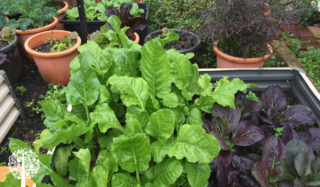
Build UP. If you have persistent issues with waterlogged soil, it may be better to change your garden design. Wet weather only exacerbates anaerobic soil conditions. Raised garden beds and containers offer an opportunity to control drainage, improve water flow and grow plants in oxygenated soil.
Filter the Sun. Intense UV sunlight and heat waves can cripple crops. Consider filtering the sunshine to minimize sunburn, transpiration and plant loss. Shadecloth and greenhouses may be options. On a smaller design scale, you may be able to use taller species or shade structures to provide some protection during the day.
Practical Crop Protection Strategies
Watch the weather forecast and plan accordingly
Be prepared with data whenever possible. If storms, long periods of heavy rainfall, or intense heat waves are predicted, install crop protection covers if possible. For example, move container gardens undercover temporarily. You may be able to use tarps, awnings, patios, decks or other covered structures. Relocate small pots under trees where the canopy provides some protection from heavy rain and sun. Put heavy pots on mobile castors so they can be moved around quickly if inclement weather comes on suddenly. It can mean the difference between saving or losing your plants.
“Make hay while the sun shines”
When the weather is sunny, get out, plant, make compost, maintain your garden, and harvest. When we get the opportunity to be productive, we have to grab it.
Harvest regularly
Minimise losses by staying on top of picking produce when ripe or almost ready. It’s better to get some food on the table than risk total loss. That means daily observation, so you get your timing right! So grab a cuppa and observe your garden.
Choose shade-tolerant edibles
Consider planting species that don’t need full sun or can tolerate partial to full shade positions. This may open up the foods you can grow in cloudy conditions, such as leafy greens, carrots and spring onions.
Hand pollinate
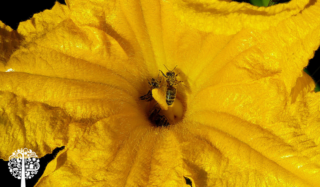
If crops are flowering, but bees and pollinators are inactive due to rain, you may have to pollinate them by hand. Some crops like pumpkins only open their female flowers for a limited time, so the window of opportunity may be short. Pollinating by hand takes commitment but ensures you still get your crops fertilized in inclement weather.
Watch your watering practices
If you have had recent heavy rain, you may be able to delay watering for longer than average. Use a moisture meter to check soil moisture levels. If your soil contains humus, clay and organic matter, it also tends to hold water for longer than sandy-based soils that drain quickly. Mulch-covered soil also retains moisture far longer than uncovered soil. Take these factors into consideration before watering. If your plants need nutrients, consider foliar spraying rather than adding to a waterlogging problem.
Replace soil nutrients
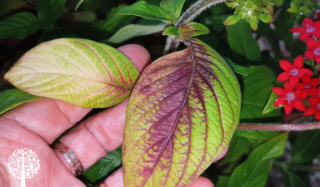
Heavy, persistent rainfall often leads to the leaching of soluble soil minerals. Look for plant clues that they are becoming nutrient-deficient. Changes in leaf color or pattern are a good visual aid. Consider quick fix foliar sprays. Liquid seaweed, kelp, compost tea or vermicast sprays can help replace essential trace elements via the leaves. Reapply all minerals to your soil or potting mix as needed under the mulch. Side-dressing with compost or worm castings, organic soluble fertilizers and soil conditioners can help replace nutrients in a form plants can take up relatively quickly.
Restore soil biology
It’s hard to take when you lose your valuable soil microorganism community. It’s a major setback. The living soil food web is vital for plant health and growth. Try inoculating your soil or potting mix with worm castings, microbial products and compost to help restock beneficial soil worker populations.
Protect worm farms and compost systems
Ensure standalone worm farms are not subjected to rain or intense sun. They need a protected, dry, cool position so the compost worms don’t drown or fry in hot weather. Similarly, covering open compost bays and systems during long periods of wet weather can help prevent valuable nutrients from leaching.
Match species to soil conditions
Most plants hate wet feet, but some can tolerate such conditions and still thrive. Consider your potentially boggy zones as opportunities for growing water-loving species. A few examples are bananas, taro, vetiver grass and comfrey.
Spread the risk
Rather than putting all your eggs – or plants – in the one’ basket’ or garden bed, split your plantings. If you have the space, spread your edibles around the garden in different zones or grow at least some in pots you can easily protect. I found the garlic I sowed in pots survived the destructive rain event, which saved me money, time and energy. Spreading the risk allows you to control the potential damage and increase the likelihood of a successful harvest.
Armed with these strategies, hopefully, we can be better prepared to protect our gardens from future challenging weather conditions and minimize financial loss and disappointment.
hello madam, i have really loved your article on gardening in changing weather. As a matter of fact, the ongoing sudden climate hazards are the leading causes of the many losses encountered by we, the small scale farmers like me.
My name is Mercy, a Ugandan student at high school doing agriculture, and am also practicing home gardening skills at school.
Frankly speaking, this article has been of help to me. thank you